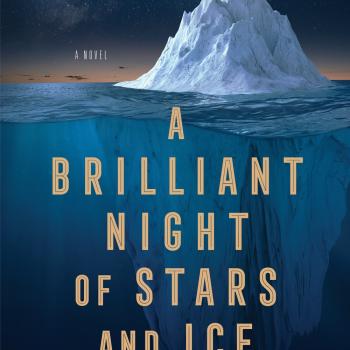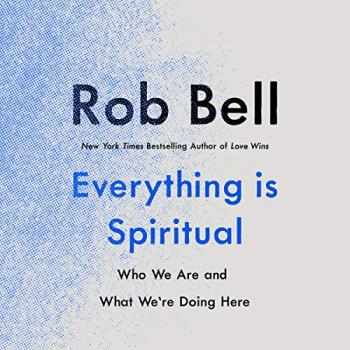A Review of The Language of Science and Faith by Karl W. Giberson and Francis S. Collins
When I was a young boy, astronomy was one of my passions. On many evenings, after my friends had said good night, I would remain outside and spend hours staring at the night sky. The moon, planets and stars silently partnered with me as I considered how small I was compared to the great expanse all around me. I had my favorites – the constellation Orion and its wonderful stars Betelgeuse and Rigel, the Pleiades, and spectacular Saturn.
Humanity among the stars. From this relationship arise the two great controversies that have vexed Christians for centuries – cosmology (how did the universe begin and how old is it?) and biological evolution (how did life emerge and thrive on earth and how long have humans been a part of that great story?). Our understanding of God as Creator hinges on our responses to these fundamental questions.
Karl W. Giberson and Francis S. Collins address both questions in their new book, The Language of Science and Faith (IV Press, 2011). Each chapter probes a fundamental question evangelicals ask regarding science and the Bible, in the hope that an essential harmony between the two may be affirmed. This is a necessary project because so many evangelical are suspicious of science:
“Unfortunately, many Christians cannot fully appreciate how science enriches our understanding of God’s creation. They have been robbed of this experience by an unfortunate misunderstanding that the scientific picture of the world is not compatible with their belief that God created the world. For various reasons, they have come to fear – and even reject – science.” (page 17)
Where does this fear come from? Giberson and Collins assert that an incorrect view of the Bible prevents evangelicals from seeing that science and faith are compatible. Many evangelicals inappropriately expect the Bible to answer all of the modern questions science is exploring: “The Bible is not a scientific text and should not be read that way” (page 106). When we realize that the Bible is not a science textbook, we can simultaneously affirm the validity of its spiritual worldview and the contributions of scientific research. “We can therefore safely accept Scripture as God’s revealed Word, even though it does not address the specifics of many scientific questions and often refers to the natural world using the understandings of the time in which it was written” (page 107).
These two Christian scientists encourage evangelicals to move away from the scientifically dubious young earth, intelligent design and anti-evolutionary positions that have dominated evangelical and fundamentalist thought for the past century. They advocate a position labeled BioLogos, which combines a theistic worldview with an acceptance of science as “a reliable way to understand the world” (page 19). Specifically, “the main distinctive of BioLogos is its affirmation of the generally accepted scientific theories about origins, including evolution, properly understood” (page 20). In short, they maintain that science reveals how God has chosen to organize the universe and the life within it.
The Language of Science and Faith presents its case in a gentle but firm manner. The science is presented in a non-technical manner. Competing points of view, from both Christian and secular advocates, are respectfully considered and countered. Readers are encouraged to consider how faith in the Biblical world-view is compatible with the scientific understanding of a universe that is approximately 14 billion years old and the gradual development of life through an evolutionary process that is testified to by genetic research and other compelling sources. Christians do not have to be “at war” with science, and the brash New Atheists should not scare us away from embracing a scientific world-view.
Giberson and Collins seek to wed healthy respect for solid science and Christian belief. Do they succeed? For me, yes, but that is because I already have come to a similar position. As an evangelical Protestant who honors the Bible as a fully inspired divine revelation written in a pre-scientific age, I do not force the Bible to answer questions it does not address. The Scriptures help me to discover God as a Creator who embeds significance and meaning to the drama of creation and its history. Science tells me how God achieved all of this. Both inform and strengthen my faith.
Will they succeed with their primary audience – evangelical Christians? That remains to be seen, but I hope they do. Rejecting modern science is not a wise strategy if we wish to engage seekers in the twenty-first century. It may appeal to some who are anti-intellectual, but it unnecessarily and sadly blocks too many from taking the religious claims of Christ seriously. It also forces evangelicals to live in an intellectual ghetto. If Giberson and Collins can persuade evangelical readers to accept their understanding of the Bible as a pre-scientific text, then they may also help them appreciate the legitimate and fascinating insights science offers.
I do have one minor criticism: some of the arguments presented in the book are repetitive; in fact, quotes are actually repeated (one example – B. B. Warfield’s position on Genesis 1-2 is quoted on pages 42 and 158). This is most likely an artifact of the FAQ origins of some of the material (see page 12).
I would recommend The Language of Science and Faith for Sunday school classes and adult small groups. It would especially be valuable for students preparing to enter college, or for college age small group discussions.
Lee Spitzer is the Executive Minister and Senior Regional Pastor of the American Baptist Churches of New Jersey. Visit his Patheos Expert Site here.













